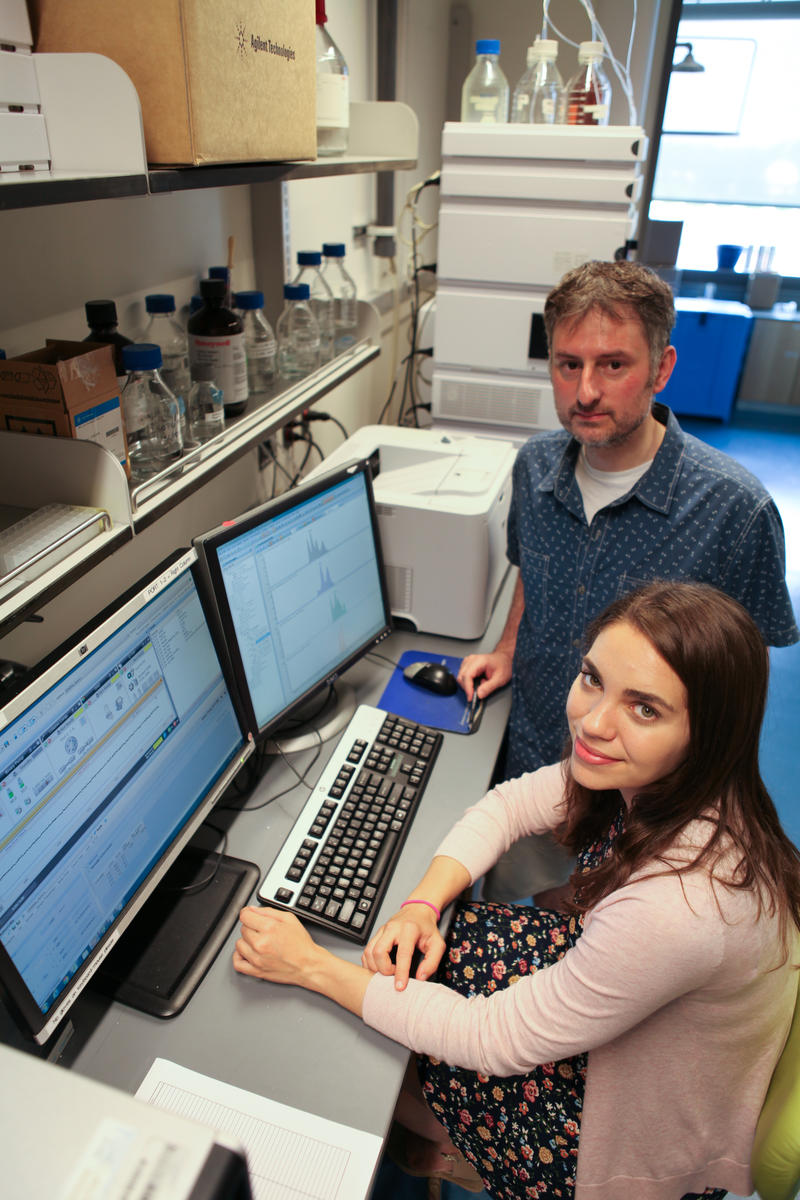Seyedsayamdost group makes big step in biosynthesis of vancomycin
Vancomycin is the antibiotic of last resort against serious bacterial infections. Discovered from a soil-dwelling bacterium that was isolated from the jungles of Borneo in 1953, vancomycin remains to this day a powerful weapon for treating deadly infections such as methicillin-resistant Staphylococcus aureus (MRSA) and Clostridium difficile. Despite its importance, the final step in vancomycin biosynthesis, which endows the molecule with its strained topology and powerful antibacterial activity, had remained elusive until a recent study led by Princeton University researchers, published in Angewandte Chemie International Edition.

Photo by C. Todd Reichart
“The biosynthesis of vancomycin has been an active area of investigation for the past 20 years,” said Mohammad Seyedsayamdost, assistant professor of Chemistry and associated professor in the Department of Molecular Biology at Princeton and corresponding author of the article. “But difficulties associated with the synthesis of the substrates and the reconstitution of the activities of three metalloenzymes have made this a technically challenging project.”
Vancomycin’s structure is assembled by macromolecular enzyme machines that build a modular peptide core. Next, three metalloenzymes, OxyB, OxyA and OxyC sequentially install crosslinks between amino acid side chains, creating vancomycin’s cup-shaped structure. The Princeton researchers for the first time demonstrated the enzymatic activity of OxyC. They showed that OxyC installs a carbon-carbon crosslink between two aromatic residues to complete the biosynthesis of the vancomycin scaffold.
By recapitulating OxyC’s activity in a test tube, the researchers were able to chemo-enzymatically synthesize vancomycin variants and bypass laborious chemical syntheses. “By simply synthesizing vancomycin’s precursor peptide and using OxyB, OxyA and OxyC in one pot, we are able to prepare the core of the antibiotic and variations thereof in the lab,” said Clarissa Forneris, a graduate student in the Seyedsayamdost group and author of the study.
With the rise of resistance to antibiotics, access to antibiotic-variants has been the most productive way to fight infections. Towards that goal, a fruitful collaboration has been ongoing with the lab of Prof. Erik Sorensen, with the idea of leveraging the native metalloenzymes and synthetic peptides to access a variety of modified vancomycins with improved antibacterial activities.
The paper, “In Vitro Reconstitution of OxyC Activity Enables Total Chemoenzymatic Syntheses of Vancomycin Aglycone Variants”, by Clarissa Forneris and Mohammad Seyedsayamdost, was supported by a grant from the National Institutes of Health (DP2-AI-124786 to Seyedsayamdost), and an Eli Lilly-Edward C. Taylor graduate research fellowship to Forneris. DOI: 10.1002/anie.201802856
